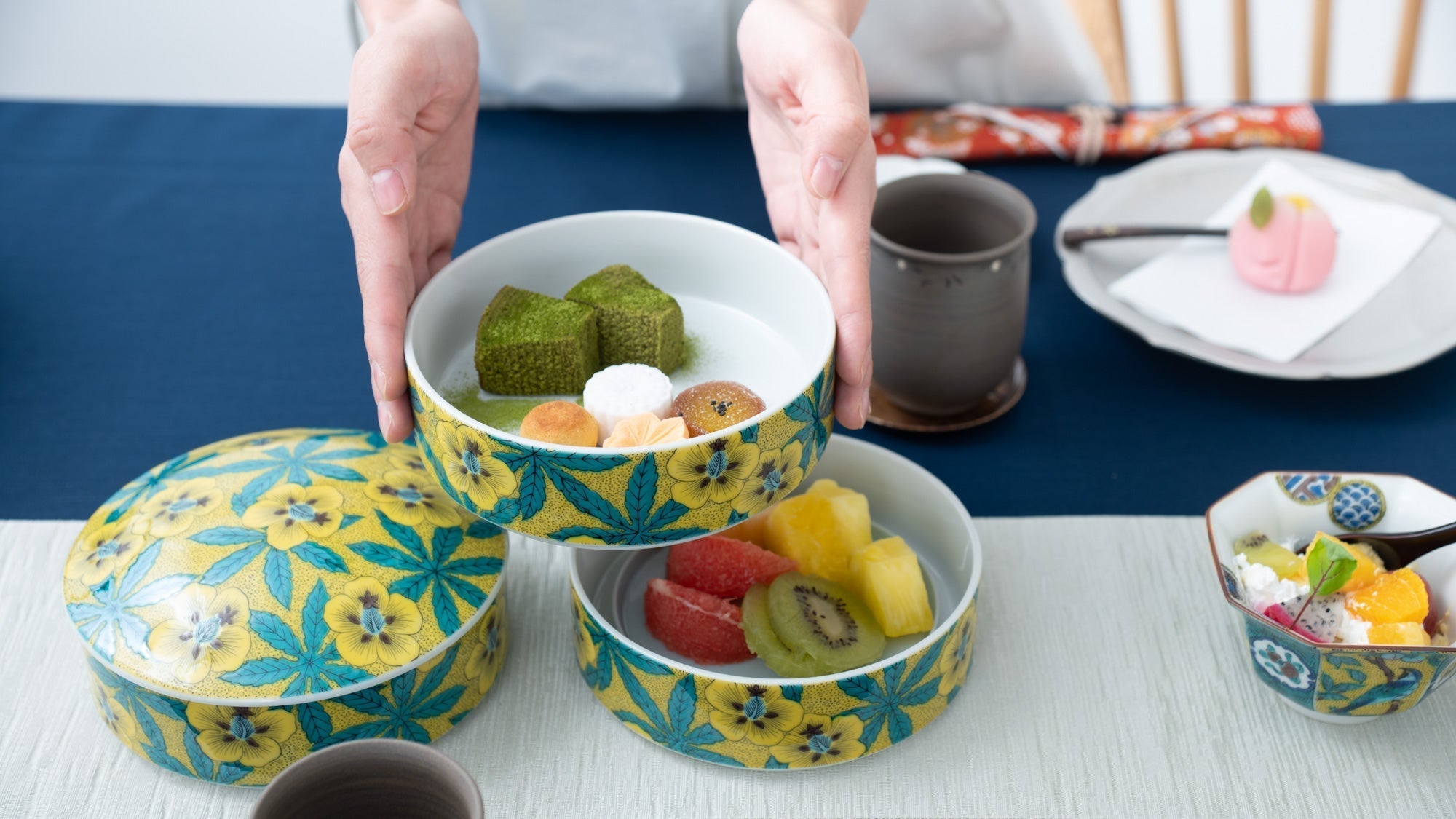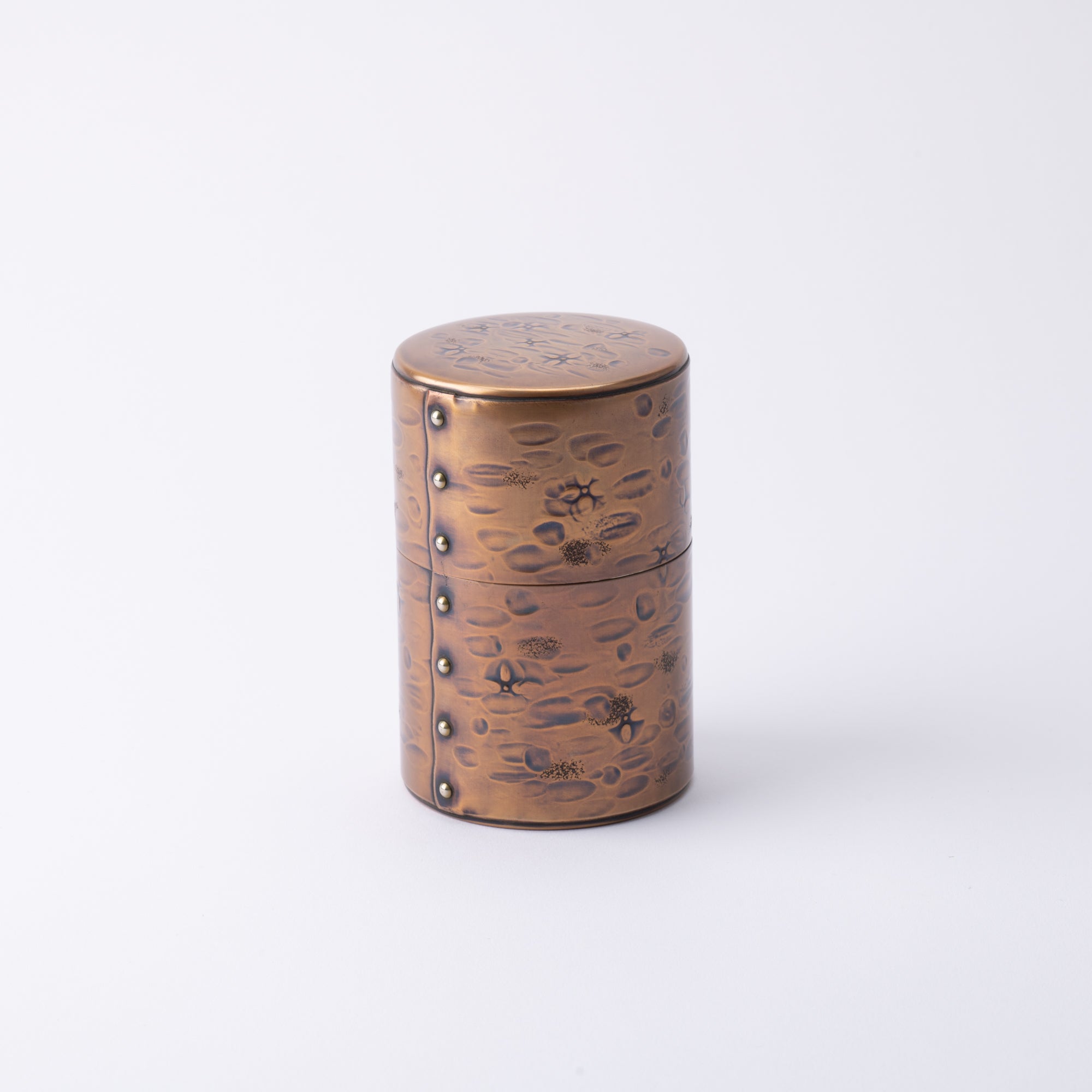
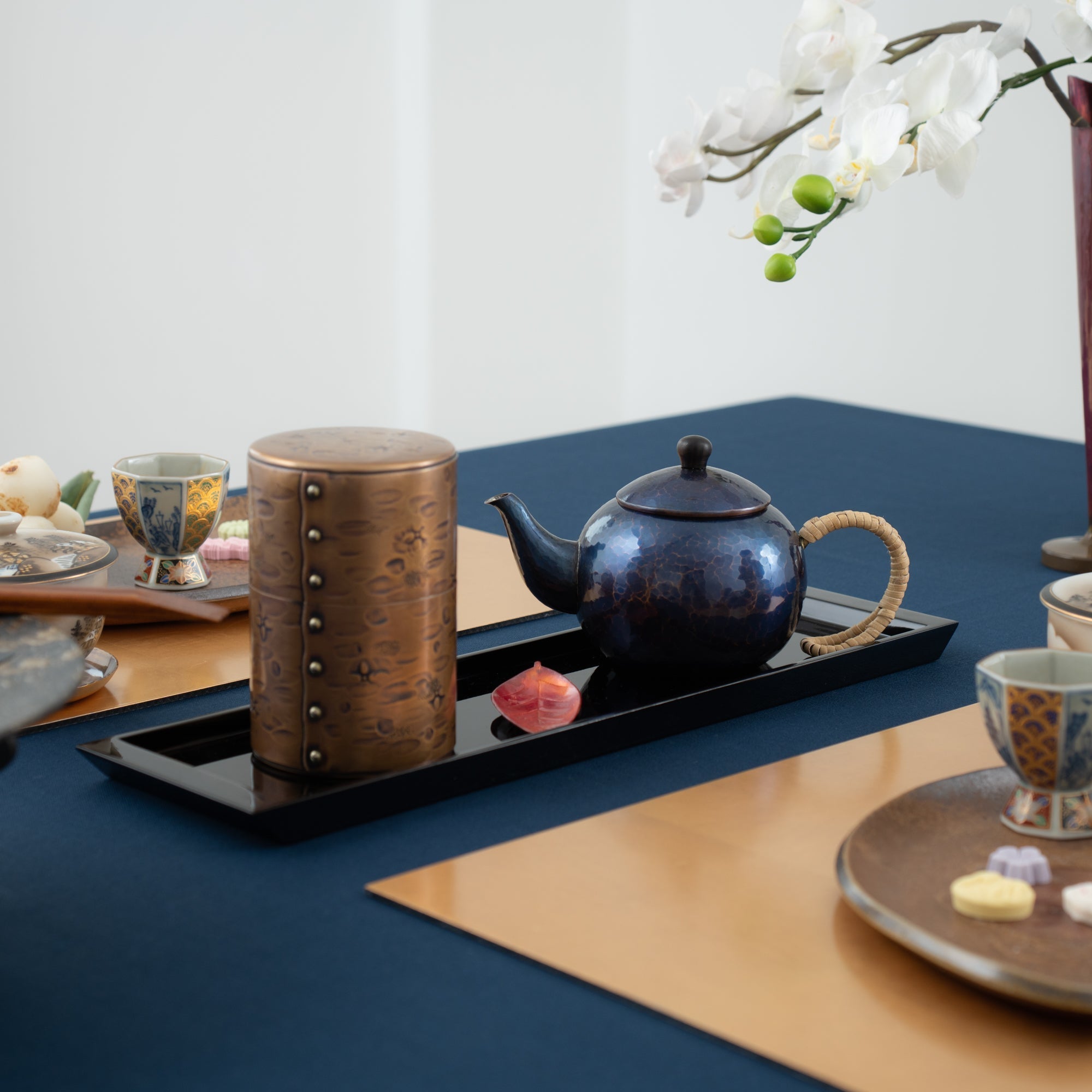
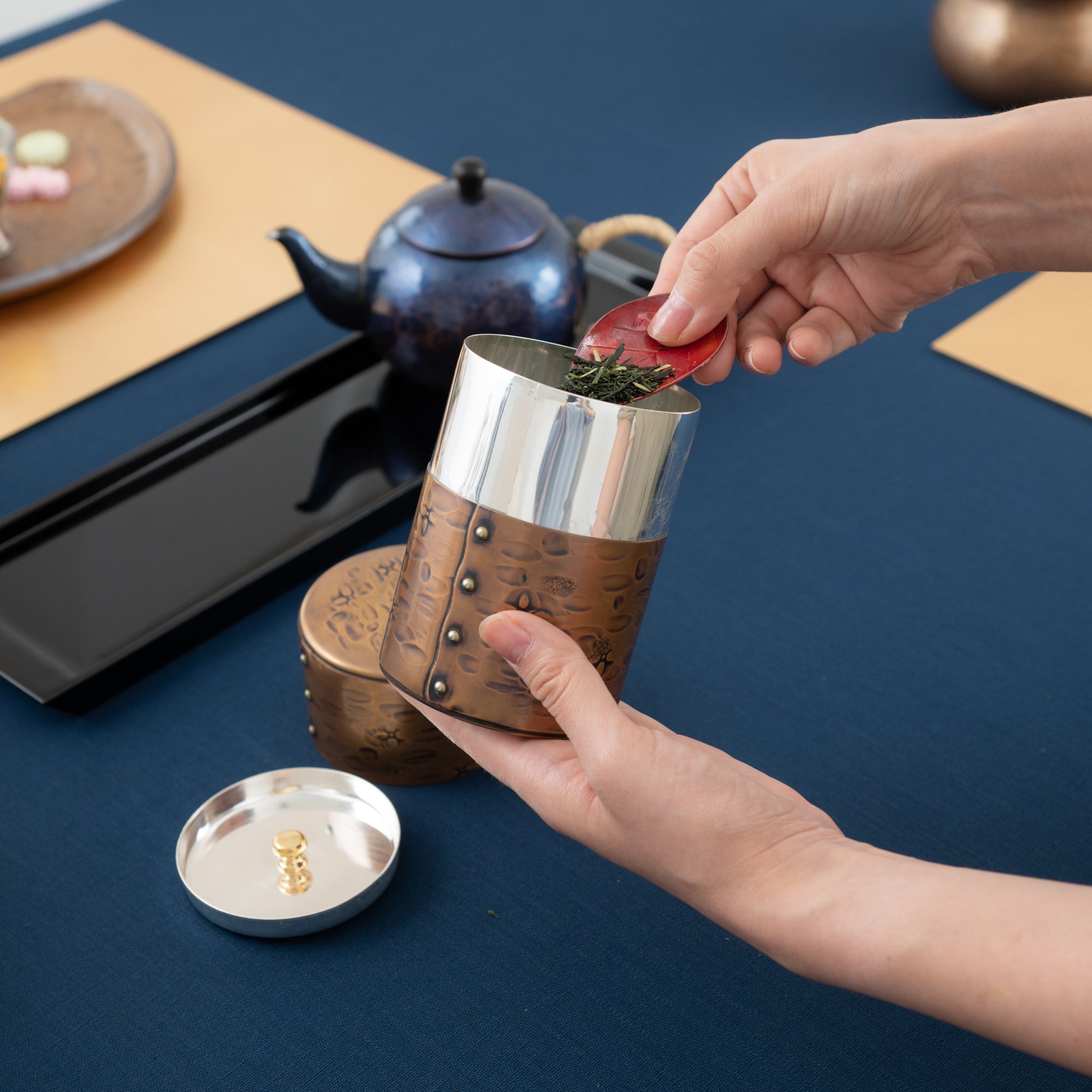
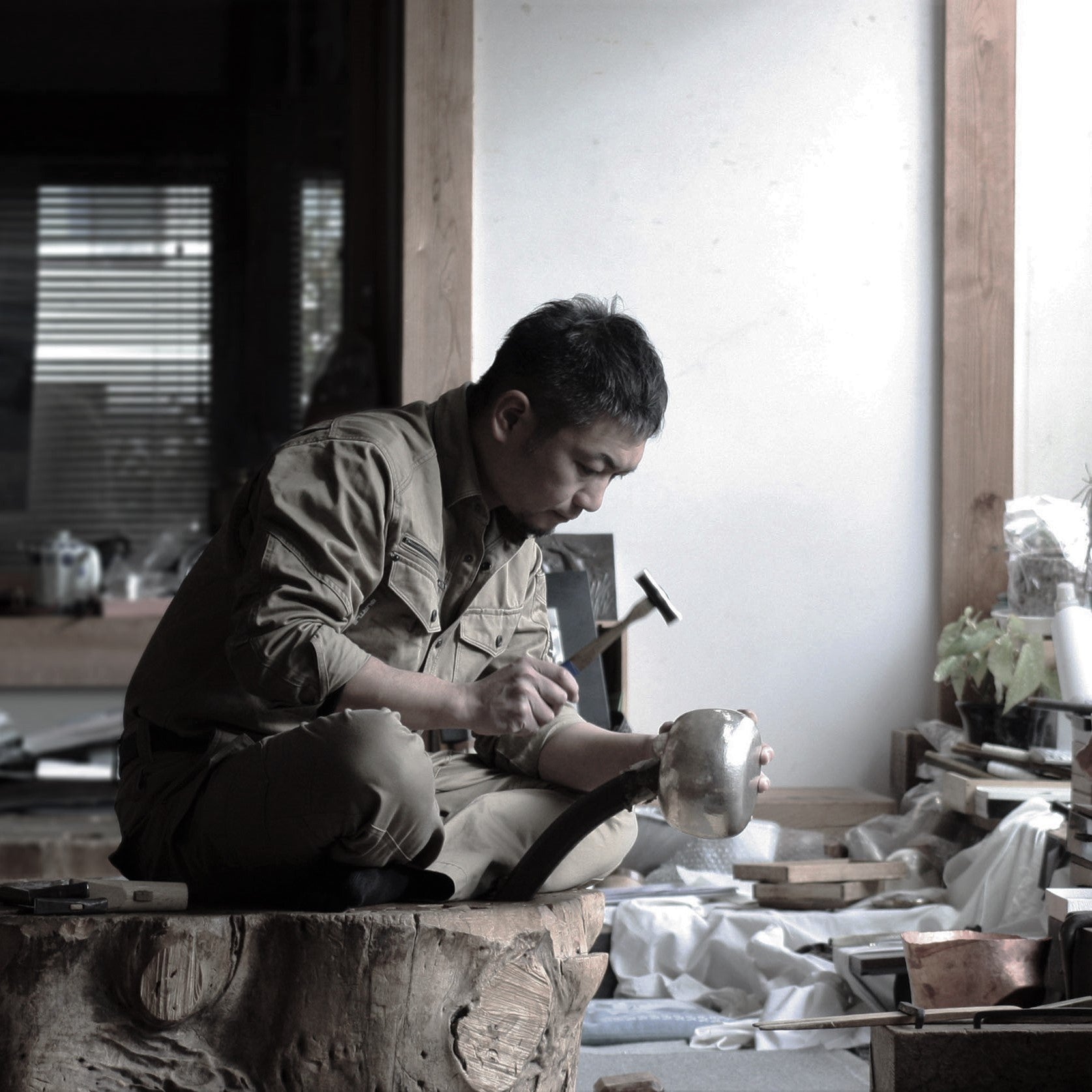
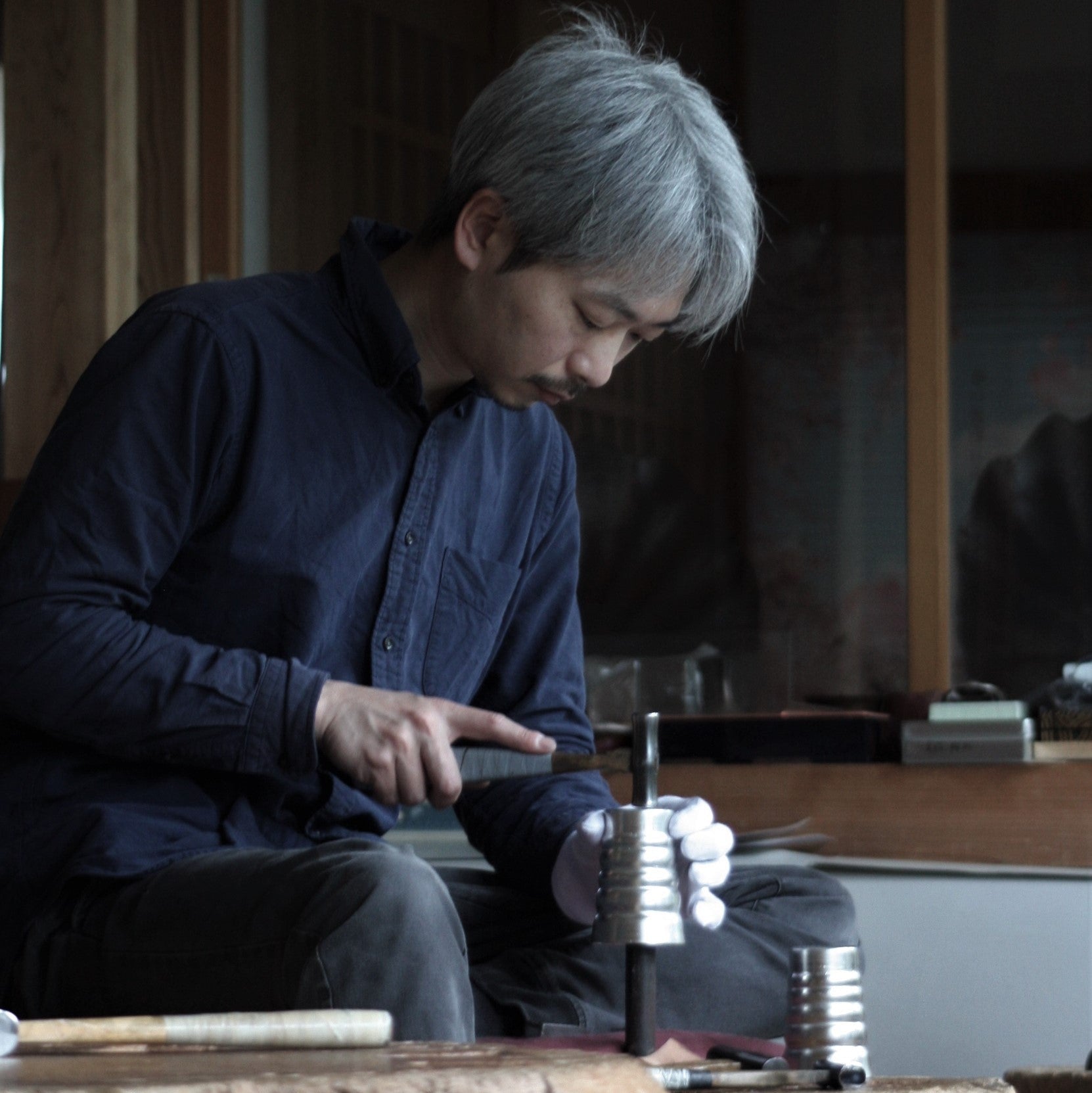
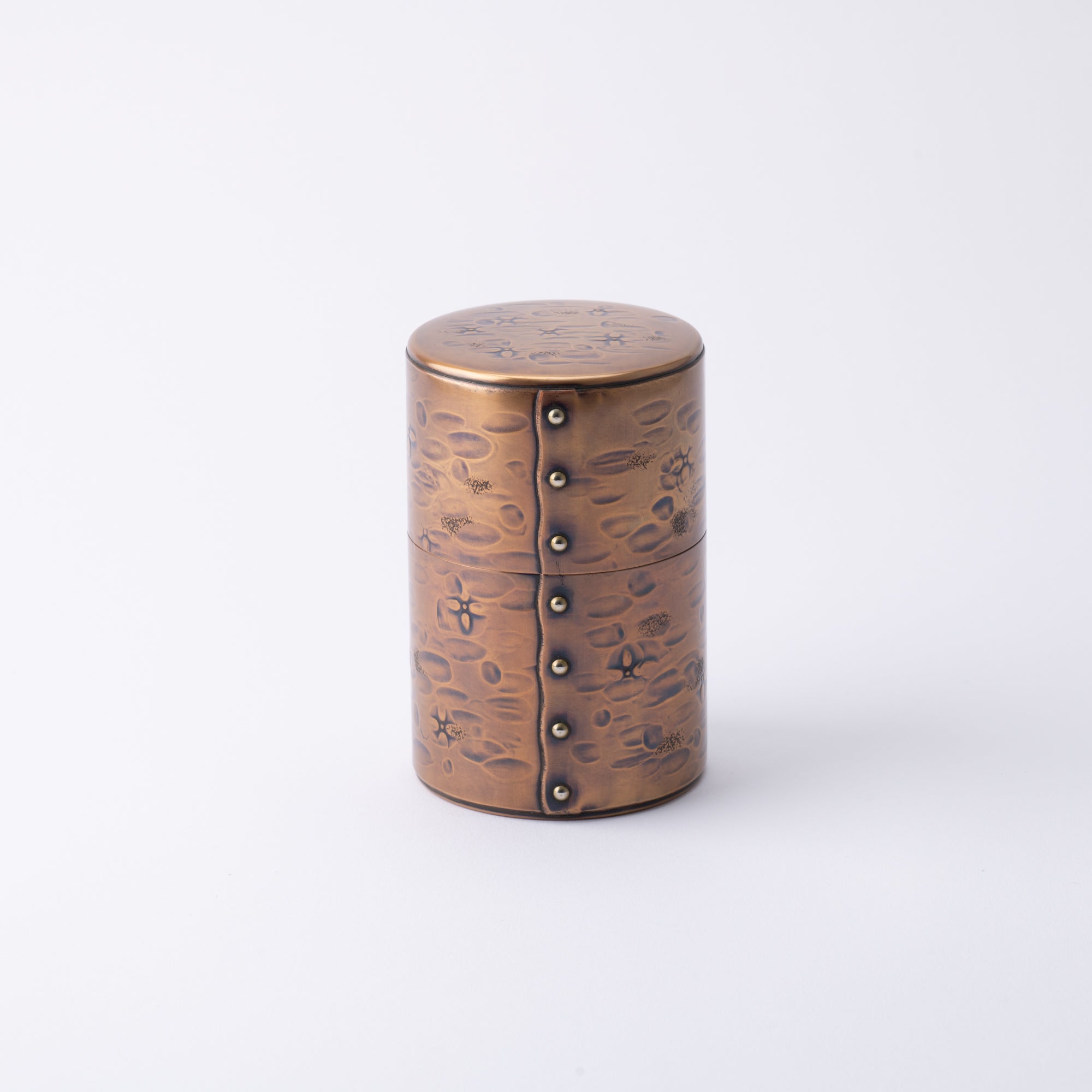
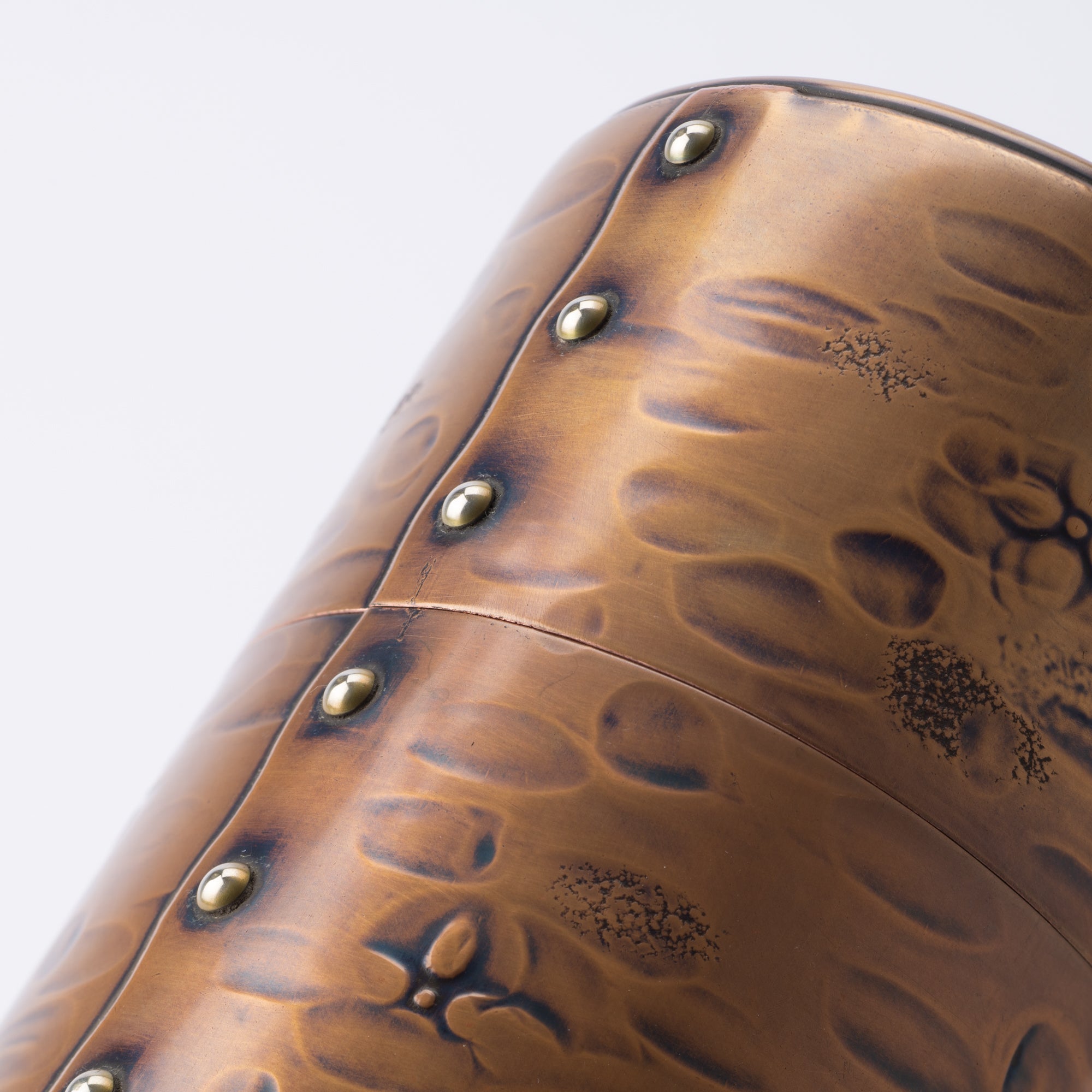
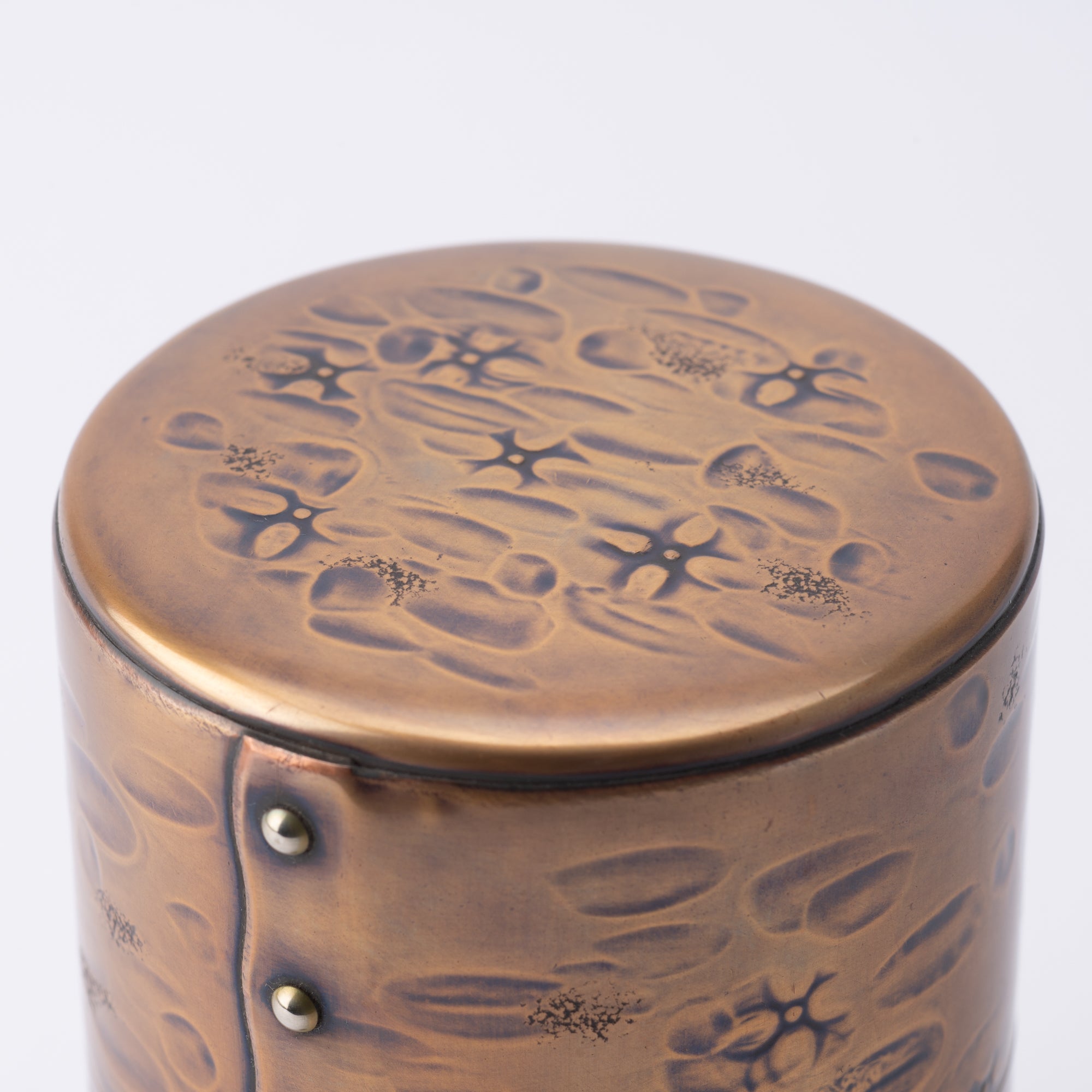

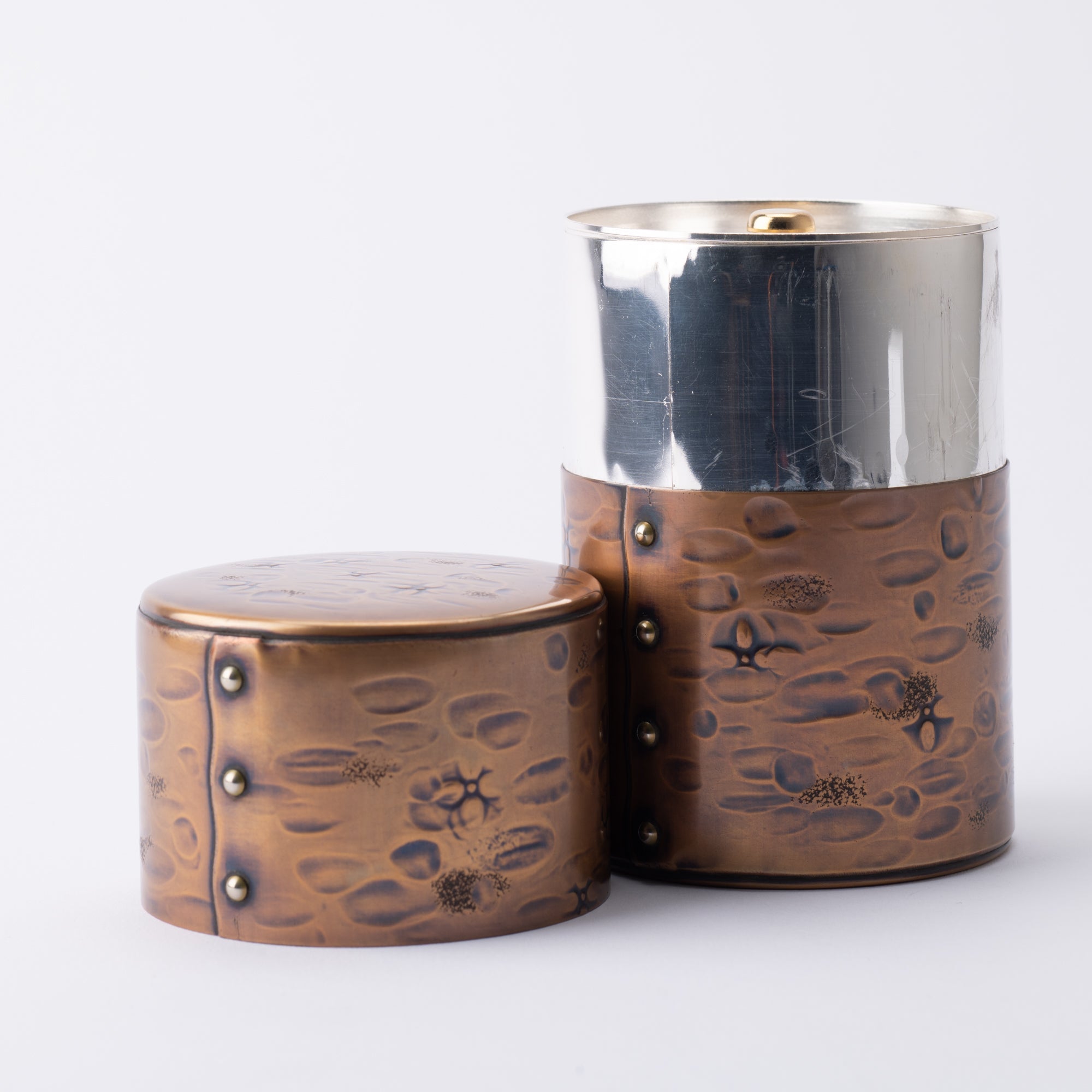
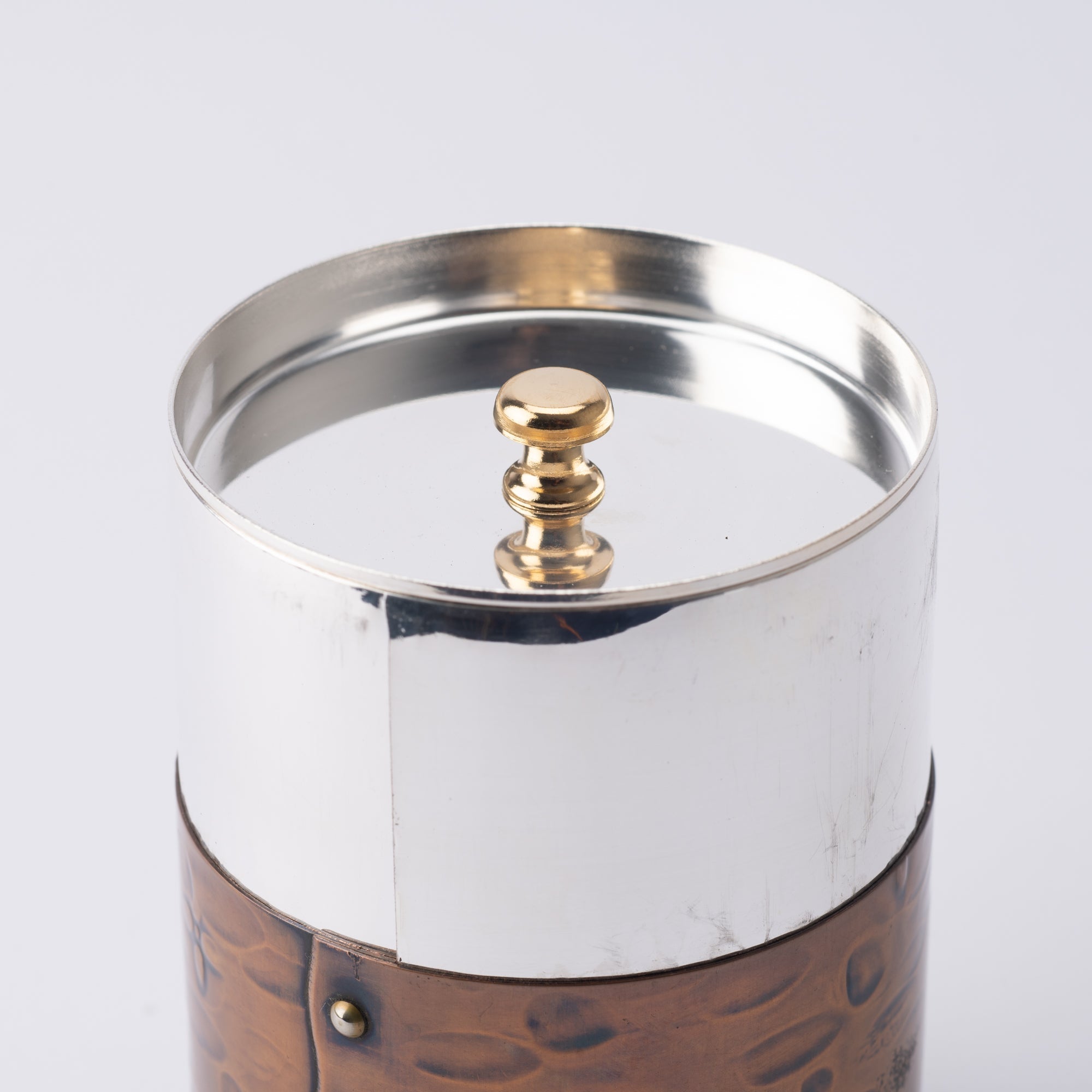
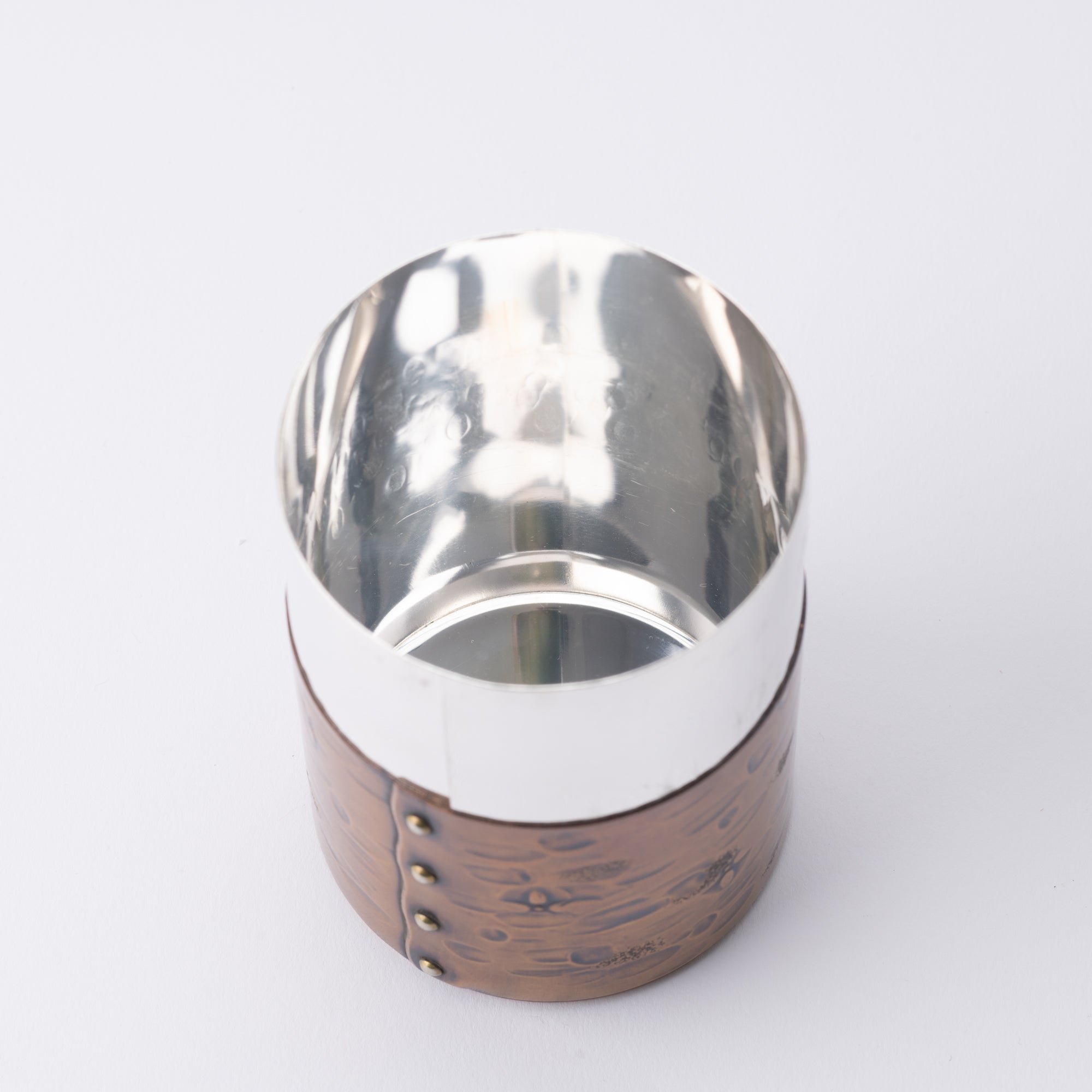
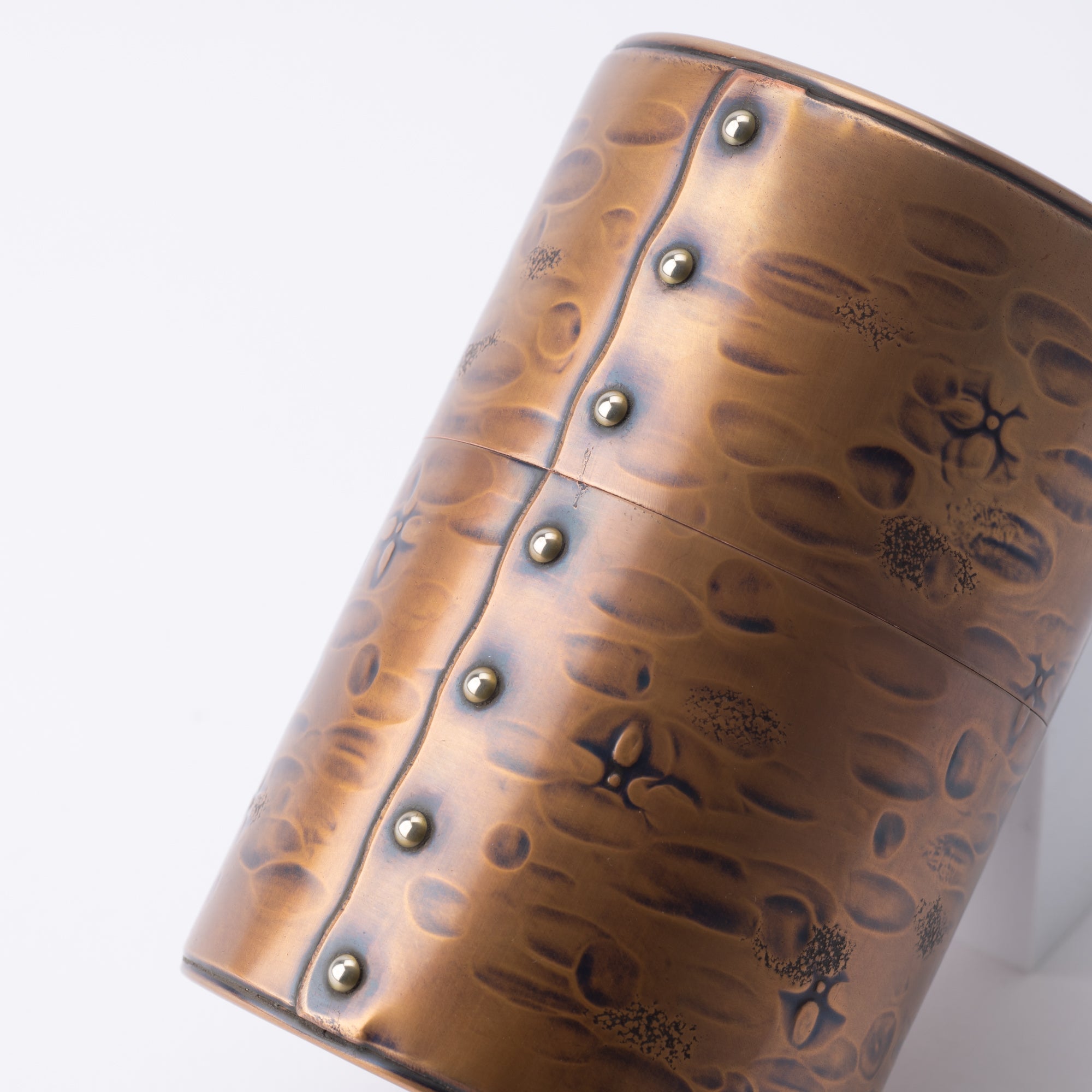
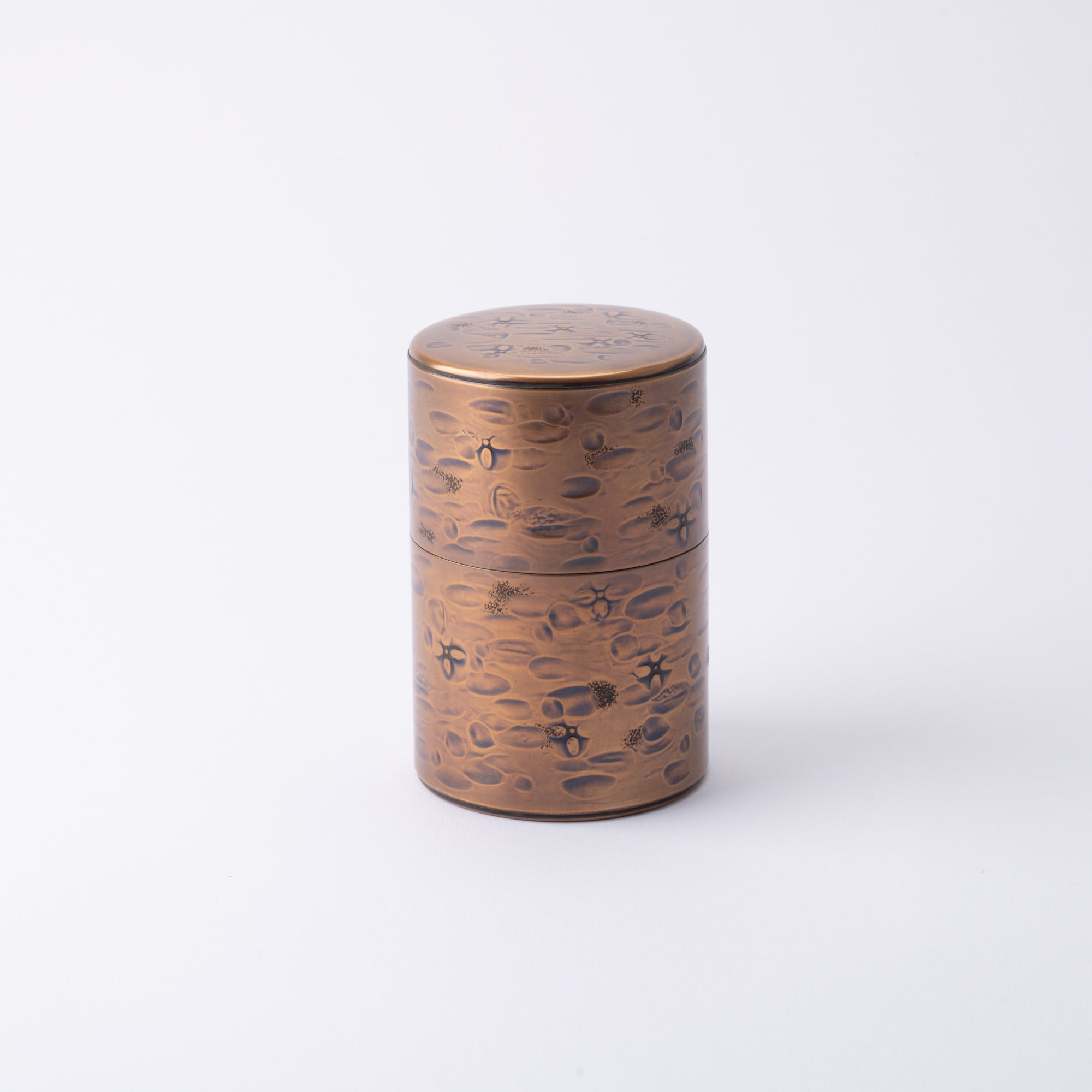

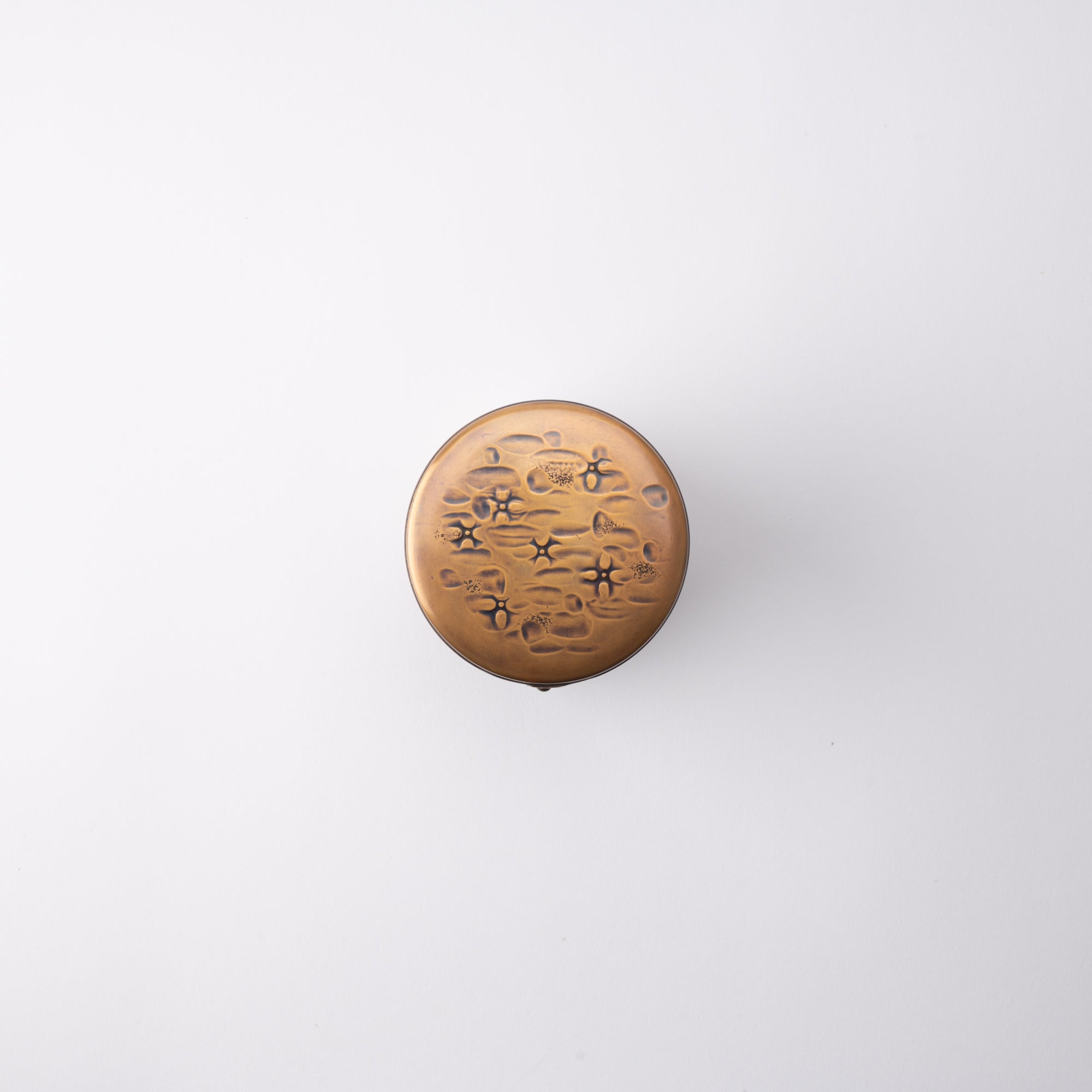
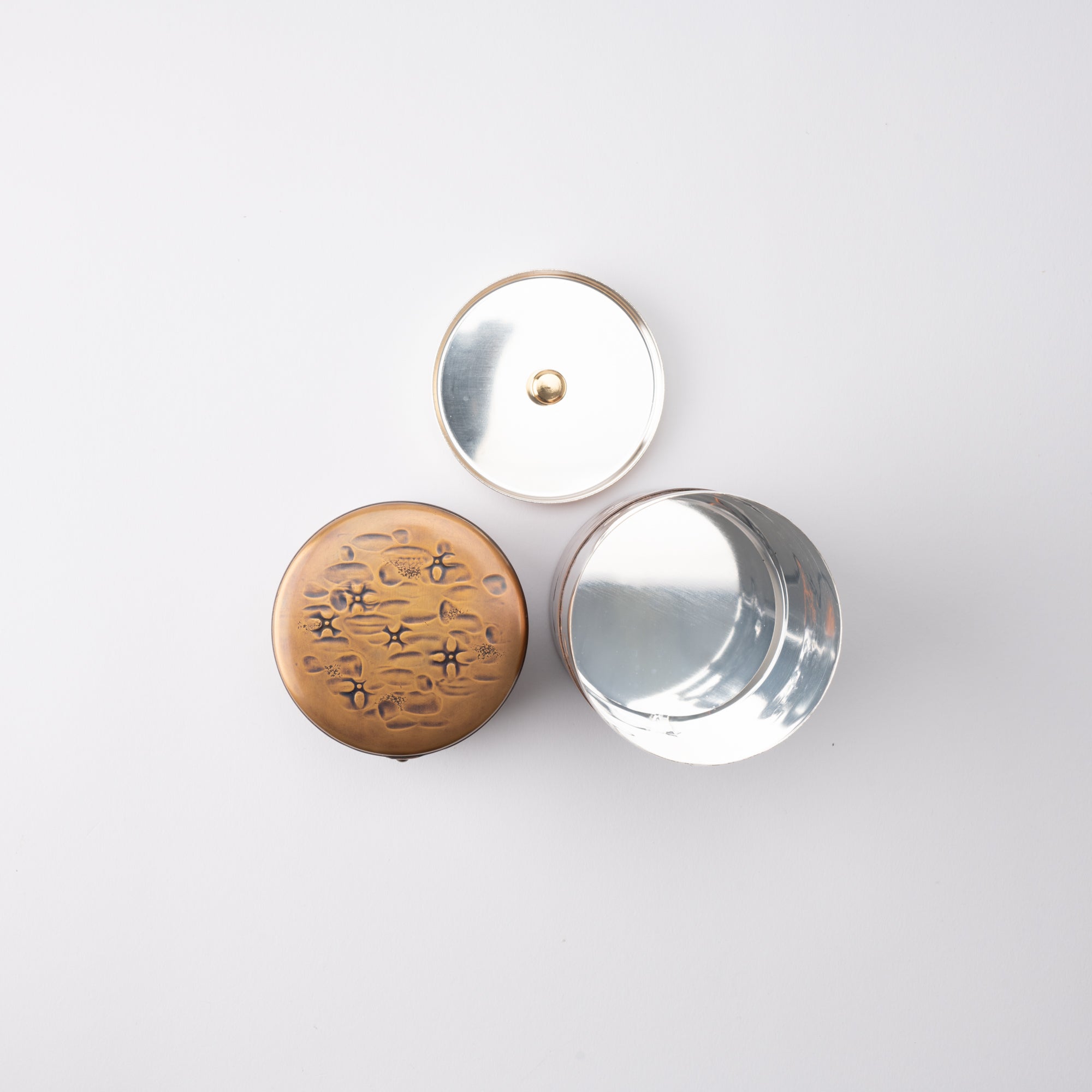
Golden Brown Tea Canister
Estimated Shipping Widget will be displayed here!
This Copper Tea Canister made by Seigado, a metalworking workshop in Niigata Prefecture, features a golden brown color. Each piece is handmade using the traditional hammering technique of "Tsuiki".
The ground color of the copper is accented with small flowers and horizontal stripes. This copper tea canister is hermetically sealed to keep tea leaves tasty.
DETAILS
| Quantity | 1 |
| Size | D 7.7 cm (3 in) × H 11.7 cm (4.6 in) |
| Capacity | 150 g (5.3 oz) of Japanese tea leaves |
| Weight | 330 g (11.6 oz) |
| Material | Copper |
| Microwave | No |
| Dishwasher | No |
Maker / Brand
Seigado’s workshop is located at the foot of Mt. Yahiko in Niigata Prefecture, where high-quality copper was discovered about 300 years ago. This region is where the traditional tsuiki metalworking technique finds its roots.
In Japan, there's a saying that things get better with use, and Seigado's products possess a charm that inspires you to cherish and care for them over time.
Crafts
Metalwork has long been prized for its durability and gorgeous appearance. In Japan, bronze swords and harnesses were made from the Yayoi period (10th century BCE–mid-3rd century CE) based on techniques introduced from China and Korea. With the rise of Buddhism, the construction of temples, Buddhist statues, and ritual implements flourished, and metalworking techniques also advanced. Eventually, a wide variety of products such as tea ceremony utensils, Japanese swords, armor, and ornaments came to be manufactured.
Choose options

















Japanese Tea Canisters & Chasaji Teaspoons
Infuse every aspect of your tea time with elegance. Our collection of handcrafted tea canisters, made of wood and metal, will help you keep your tea fresher and more delicious, for longer. Choose a handcrafted chasaji spoon—traditional or modern to suit your tastes—to scoop tea leaves with ease and style.
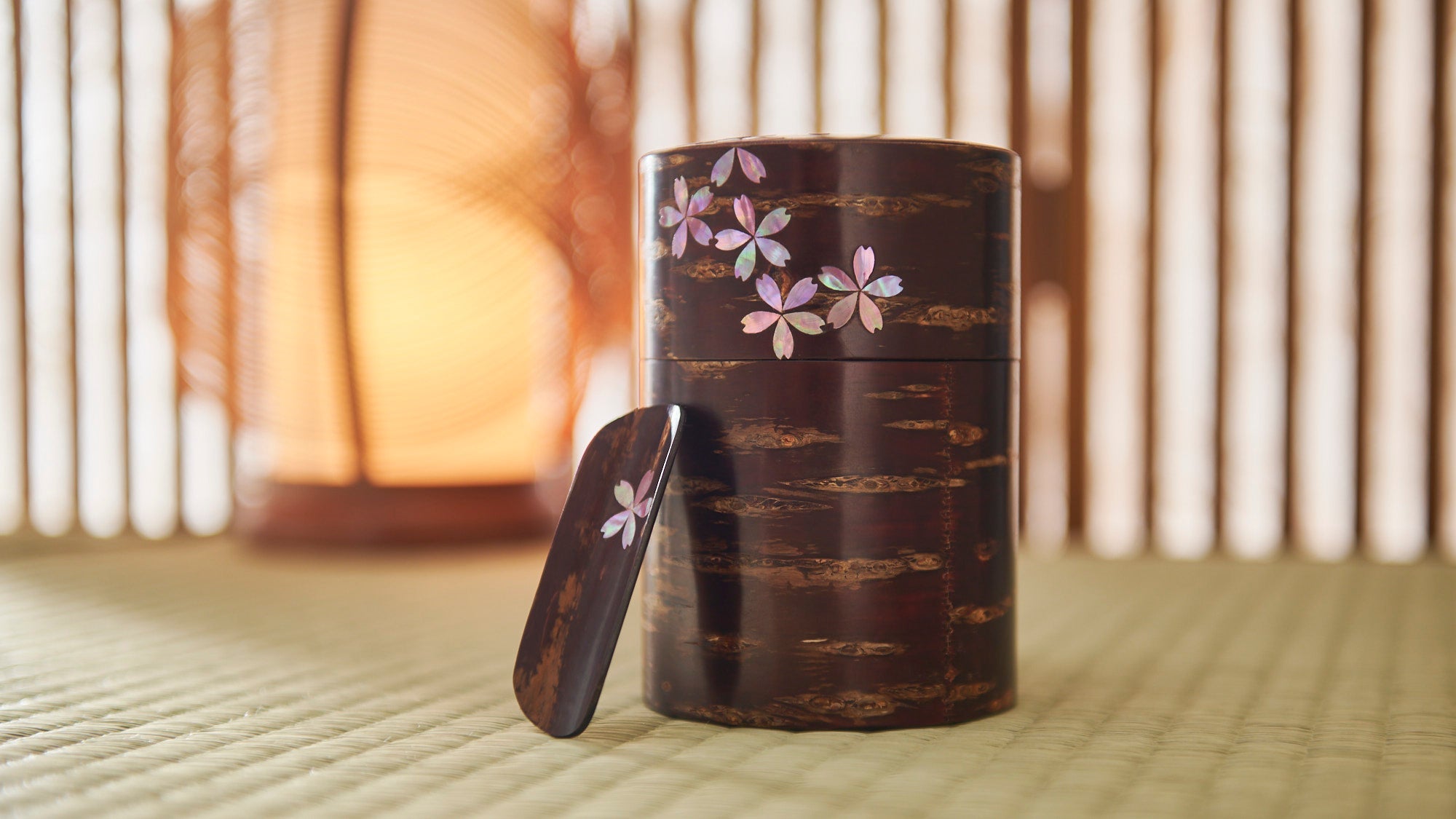
Seigado—The Radiant Beauty of Copper
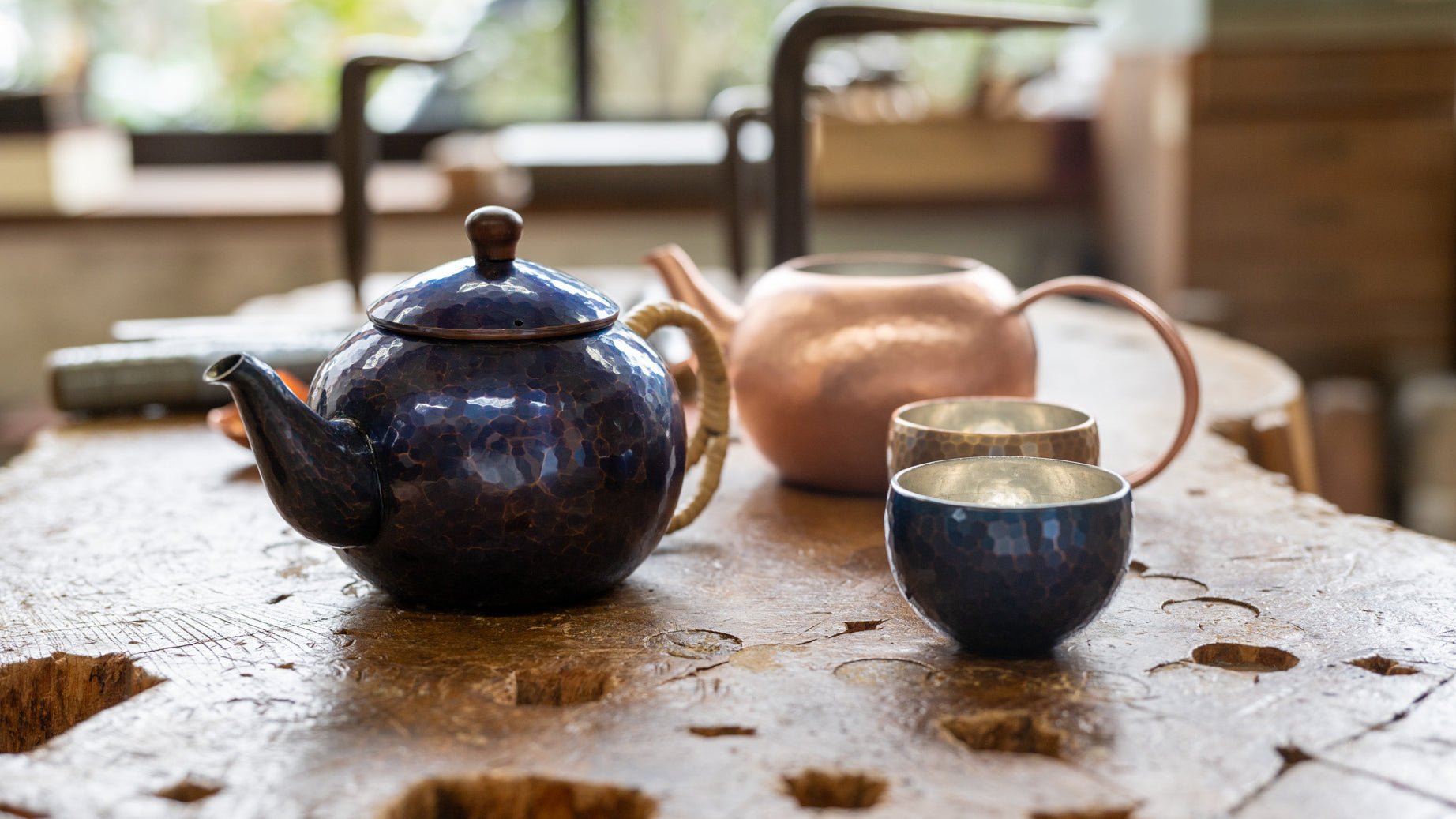
A Fun Afternoon with Japanese Sweets and Tea
